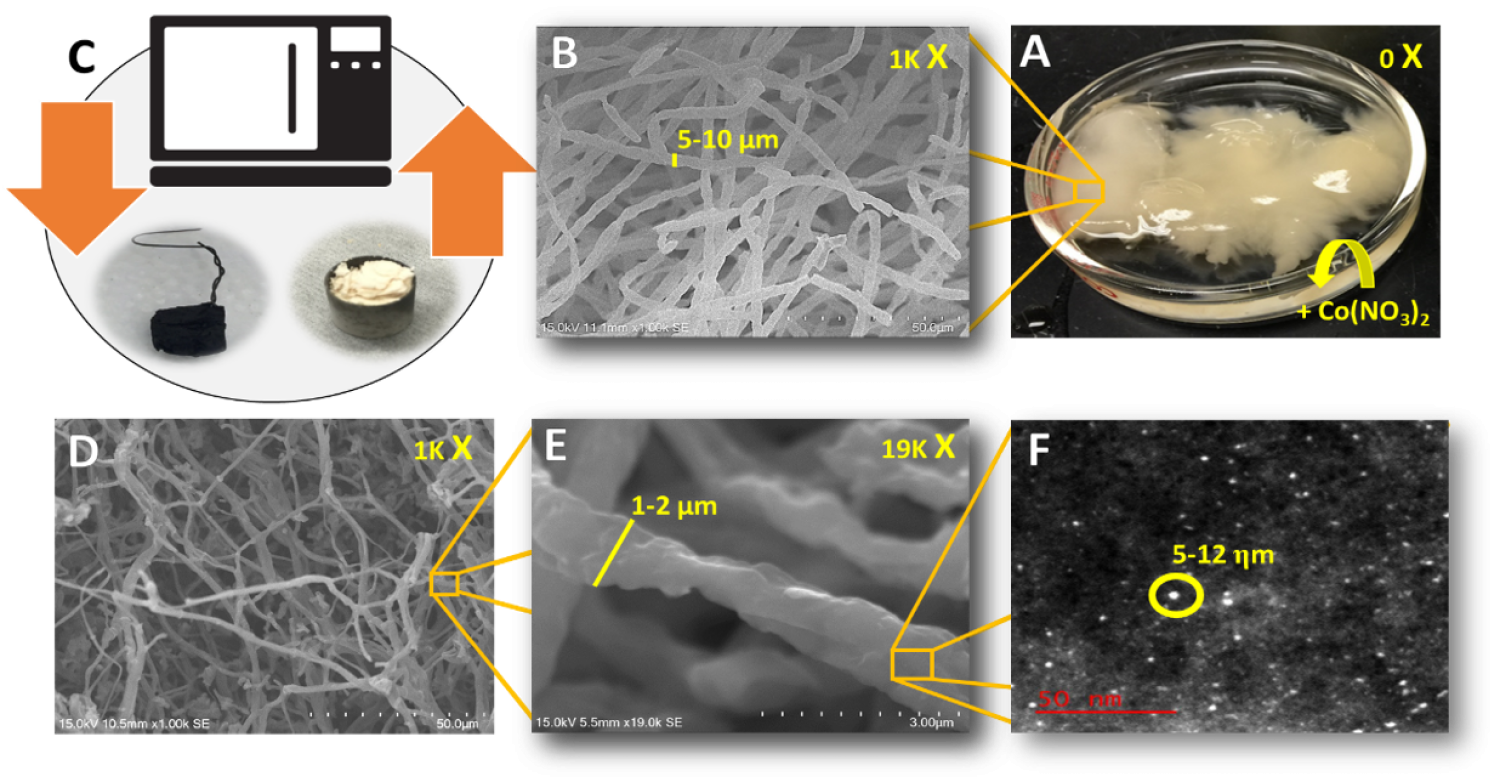Growth of Fungal Electrochemical Materials

Background
The next generation of green-based materials for fuels, commodity chemicals and materials is being led by the conversion of biomass based on their low-cost and availability. Biomass materials have advantages such as renewability, tunable physical characteristics dictated by the natural structures within the feedstock, and their similarity to commercial graphite based conductive materials. Methods used to incorporate transistion metals into the materials typically involve soaking the biomass in toxic metal salts—adding additional steps and resource expenditure. Additionally, dead biomass only allows for the sorption of one mode, preventing the localization into actively growing biomass. The use of crops and woody biomass is also hindered by the slow growth conditions (days to years).
Technology
Former CU Boulder professor Zhiyong (Jason) Ren and inventors have developed a method to eliminate this limitation using a fast-growing, filamentous fungi, Neurospora crassa. Additionally, they are able to demonstrate control of the electrochemical properties of an electrode derived from the biomass through the manipulation of the biological growth conditions during the growth of the material, as opposed to post-growth modification. The chemical composition of the fungi can be modified by adjusting the concentrations of sodium nitrate and cobalt exposure in the pre-growth material, regulating the nitrogen assimilation and ultimately forming cobalt nanoparticles in the fungal structure. In this way, the extent of the nitrogen-doping was controlled. Pyrolysis of the material was conducted at 800°C, and the 3-D microstructure was preserved from the parent material.
Photograph of growing N. crassa, (B) SEM image of hyphal mat, (C) graphical illustration of biomass thermal conversion, (D) SEM image of carbonized hyphal matt, (E) SEM image of biocarbon tube, and (E) FETEM image of cobalt nanoparticles.
Advantages
- High order structure
- Rapid growth (<24 hrto create 1000x original mass)
- Increased capacitance compared to electrodes derived from pre-grown biomass
- Shaping characteristics of an electrode during growth of biotemplate
- Reduction in polarization resistance and higher electrochemical stability
Market Applications
- Synthesis of carbon anodes
- Energy storage
What's Next?
This technology is available for exclusive or non-exclusive licensing.
Nicole Forsberg: nicole.forsberg@colorado.edu
The Newsroom
For marketing and communication inquiries or news tips, contact Daniel Leonard, senior marketing and communications specialist for Venture Partners at CU Boulder.
For media inquiries, please visit colorado.edu/news/formedia.


